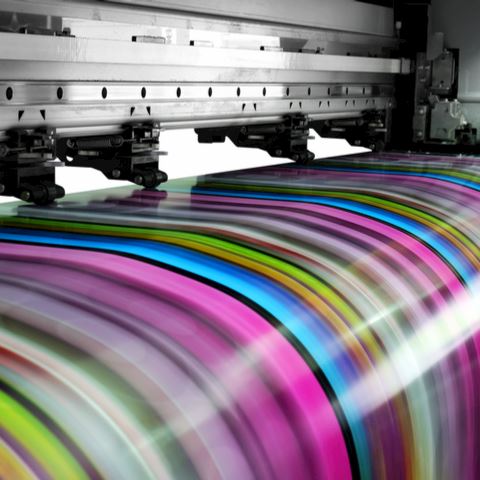
Navigating the rise of technology in construction
In this article we’ll dive into the booming world of smart construction technology, exploring the innovations driving the change and what the future looks like for the industry.

Digital is undoubtedly here to stay but contrary to popular belief, print isn’t dead. Clear B2B’s Taylor Williams spoke with Mike Malpas, Managing Director of Hampton Printing, to explore how print can keep up in a shifting media landscape and what value it offers.
The ease with which online platforms and social media channels allow content to be pushed out and subsequently measured makes digital content an invaluable public relations and marketing tool.
That said, the UK remains the world’s fifth largest producer of printed products, employing 140,000 people in 10,500 companies with a turnover of around £14 billion. Print is all around us and continues to play a vital role in our daily lives. And, with fake news credited with everything from manipulating elections to overthrowing dictators, most people are now thinking twice about how they digest their information.
The Guardian reported in January, for example, that just 24% of the UK population currently trusts the likes of Twitter, Facebook and Instagram when looking for news and information. Whether this distrust permeates all digital platforms and triggers a full-blown resurgence in traditional print media remains to be seen – but it does mean people are at least considering it.
Creativity
The visual and creative freedom offered by print is still appreciated by brands, agencies and designers. With scale and full freedom to implement branding ideas with no real confines other than dimensions, print is a format that allows excellent creative design. But it can’t afford to stand still.
With an expectation for print media to become increasingly vibrant, engaging and tactile with a premium feel, the industry needs to continue to innovate and diversify its offering to keep up with changing trends. You can now intricately print on stock that feels like wood or metal; or emboss the grill on an image of a high-end car for its latest brochure, for example. Or take Motorola’s Moto X or Nivea’s sun band adverts – both great examples of interactive print.
The digital print revolution has already helped to enable great innovation and will continue to do so. Digital print is now incredibly sophisticated and can deliver highly detailed, tactile print on a wide range of stocks without compromising on quality or cost for smaller, personalised runs. It’s taken on the finer details of traditional litho printing but now has the capability to deliver them quickly and cost-effectively. This has enabled brands to realise the huge immersive potential of print without the restrictions that previously held them back.
Printers are also working on broadening their overall service package, and in a push for innovation, Mike believes brands are now more than ever open to suggestions and willing to embrace their expertise. This could well mean that we see the boundaries between print, PR, marketing, and advertising merge even closer in the future.
Value for money
In the age of click rates, impressions, likes and retweets, it’s essential for print to prove its worth by demonstrating measurability and importantly, cost-effectiveness. Mike explained that while the cost of print’s raw materials and postage has increased, printing is still cheaper now than it was 20 years ago.
However, only after considering potential return on investment can you accurately consider where the best value for money lies. Take brochures, for example: a staple piece of marketing material. Hampton’s research has found that initial uptake in purchases from online and print brochures are about the same before plateauing, but often there’s a second spike when people pass their brochure on or pick it back up. They feel this isn’t just unique to older generations, but also digital natives who perhaps find it refreshing to receive targeted, personal print materials in an age of impersonal digital saturation.
Mike comments: “These print materials have also come from what’s arguably a more deliberate commitment of subscribing to something to be sent in the post, rather than via email. This can imply an increased likelihood of people engaging with it and ultimately, an improved chance of converting sales.”
Timing
Timing is always a factor in marketing or advertising. Digital channels’ ability to launch campaigns at a moment’s notice and withdraw, reschedule and edit them efficiently has prompted the print industry to invest huge expenditure to keep up with shrinking lead times and increased expectation.
Traditionally, print was thought of as lacking flexibility due to its reliance on booking and artwork deadlines, but modern technology is helping the industry keep up with demand. As Mike explains: “Online proofing; files sent direct to press; 24-hour printing; and being print-ready in just six minutes are all innovations we’ve introduced to help streamline our service.”
The introduction of digital has clearly disrupted the print industry but reports of its death are premature. We’re seeing examples of printers connecting with their customers in more meaningful ways, by offering products and services that leverage their heritage in print but also connect seamlessly with the digital and online world. Digital’s undoubtedly here to stay but print remains a crucial element of any successful integrated campaign and shouldn’t be forgotten.
Contact Rachel Arquati and get more from print.



In this article we’ll dive into the booming world of smart construction technology, exploring the innovations driving the change and what the future looks like for the industry.

Learn how to use presentation opportunities as an effective lead-generation tool in your trade show activity.

Great marketing success comes from keeping your communications focused, engaging and simple to ‘get’ - but that isn’t always so simple to achieve.

With multiple types of technologies being considered, we bring you a snapshot of alternative fuels and review the most prominent pros and cons for each one.